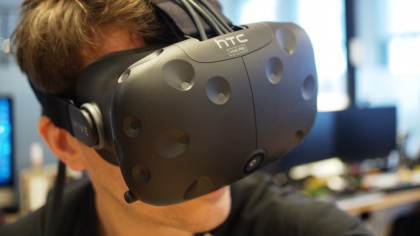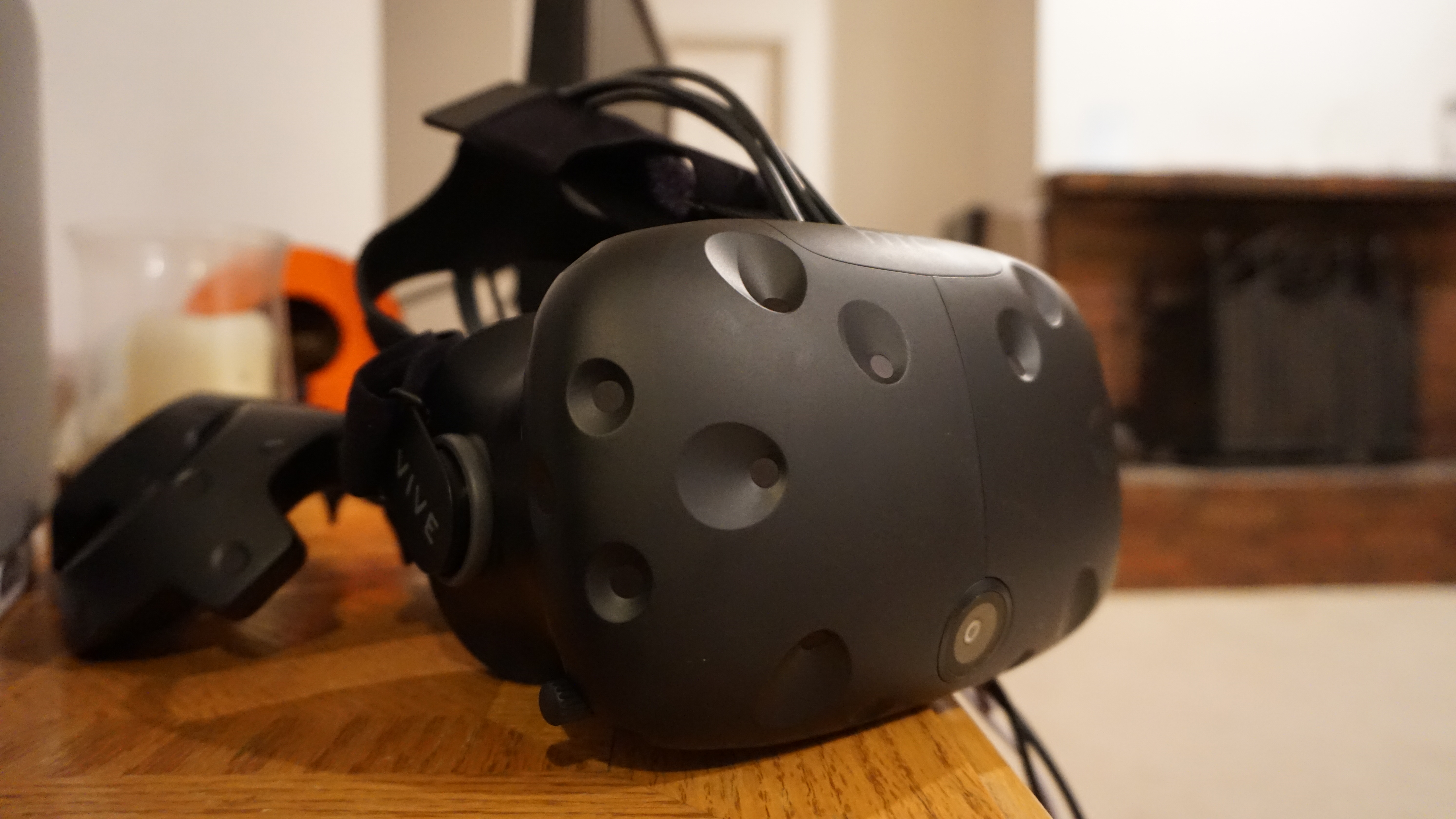Why you can trust TechRadar
Out of all the questions I was asked while reviewing the HTC Vive, the most frequent ones were "what is like to spend a few hours in virtual reality?" and "will it make me sick?"
While I've tried to keep most of this review as objective as possible, there's simply no way to answer these questions with a one-size-fits-all remark. The answer, quite simply, is that your mileage may vary. Some of you, even the most hardcore of hardcore gamers, might feel like the world has been pulled out under your feet when you step into virtual reality. It's one hundred million times better than what the Virtual Boy offered two decades ago, but I've both watched – and experienced first-hand – a bad reaction to the hardware that comes with a bad demo.
With that said, I'll do my best to answer these questions as specifically as I can with the knowledge I've gleaned during the review period.
Motion sickness and building a tolerance to VR
The first time I tried virtual reality I felt very sick.
For the longest time (which approximately comes out to about two and a half years) I avoided virtual reality because of one bad experience early on with the Oculus Rift.
After that, it seemed like no matter what hardware I was using the mere act of putting on a VR visor induced both a nauseating feeling in the pit of my stomach and an overwhelming dread.
I gave up on virtual reality for a while.
Sign up for breaking news, reviews, opinion, top tech deals, and more.
It took two new iterations of Oculus and a complete overhaul of the HTC Vive to bring me back into VR. I can now safely say that a lot of those negative feelings I had in the beginning have been dispelled, and I feel almost as comfortable in the virtual world as I do in the real one.

I achieved this by subjecting myself to the feelings of disassociation, anxiety and paralyzing overwhelmingness that you get when you put on a virtual reality headset on multiple occasions.
So, coming back full circle to the question at hand, will it make you sick?
If you're like me the answer is, at first, it might. Your body isn't used to feeling disconnected to the visual stimuli it's receiving. Even if you game for hours and hours per day, you still are sitting in the real world, periodically removing your gaze from the television screen to look at your cellphone or interact with another human being. In virtual reality, the only thing you ever see is the screen and the objects on it.
The good news is, as long as you're playing games that are designed well and do everything they can to minimize screen jitter, you should start to develop a tolerance quickly.
Extended use: a double-edged sword
Another long-held belief that I gave up after owning the Vive for two weeks is that the maximum amount of time someone can spend in virtual reality is 30 minutes.
During the two-week review period, I easily spent two or three hours a day inside the headset. A vast majority of those sessions lasted more than an hour and some tallied closer to two and three. Usually these long hauls involved more than one game – I'd spend 30 minutes playing The Lab, before playing Space Pirate Simulator, Ninja Trainer or Water Bears – but, if there were longer experiences available, I could have seen myself dedicating the same amount of time solely to a single experience.
These longer experiences have gradually made their way to VR platforms since the HTC Vive launched, and as you get used to virtual reality, there's every chance you'll be able to stick it out for hours at a time.

The second problem is that, while I enjoyed every second I spent in virtual reality, the transition of coming back to the real world was one that I found especially difficult. Without dramatizing the emotions, I felt as though I wasn't all there when I took off the helmet. The closest feeling I can pick out is the one where you look at yourself in the mirror and don't really understand the person looking back at you.
You'll still be you, but it won't feel like you at first.
Like playing a regular video game on a 2-D screen, you'll still get image burn-in (called the Tetris Effect) but, at least for me, I also had the slight outline of faint blue lines from Chaperone mode hanging in the background of my vision long after I'd taken off the visor.
These side-effects aren't something that concerns me and I'll keep to my habits of extended use after I'm done writing this review. I've played video games on CRT TVs long enough to know that, while strange, these secondary effects do fade in time without leaving behind permanent damage.
The future of Vive and VR in general
I hope, by this point in the review, I've imparted a modicum of my excitement about the HTC Vive and the experiences it can provide.
What's amazing is that, even though I feel like I've covered the product extensively in the last 3,000 or so words, there are still four or five more features that the HTC Vive is capable of that no one has talked about and no developer has even begun to touch.
In no particular order, they include multiplayer gaming, videos in virtual reality, using the front-facing camera for augmented reality games, integrating the headset with your cellphone to enable texts and calling without taking off the headset, and using the cameras and your headphones' microphone to virtually meet up and chat with other players through SteamVR.

Some of these features may well come down the pipe in the future but they're not quite there yet (or at least nowhere near where they could be). As good as the HTC Vive is, there are still areas where we can see room for improvement.
Maybe the developers didn't want to be intrusive or tell you how to use your new investment. Maybe the headset is just more powerful than developers are creative at this point. Or maybe I've just missed a feature or prompt that fell in between the cracks.
In any event, I view these potential features more with excitement and less with disappointment. I can't wait until Valve finds a way to show off videos made in virtual reality or finds some way to enable multiplayer between two people using HTC Vives.
More games would be great, don't get me wrong, but these are core functions of the headset that – as of right now – are completely going unused or are being used in very minimal ways. (The front-facing camera, for example, can be turned on and off to see how close you are to objects should you feel the Chaperone isn't quite right.)
In addition to the weight and cost of the headset, these are all areas of improvement or new features that I see HTC and Valve working on over the course of the next few years before the inevitable sequel.
Current page: Motion sickness, extended use and VR's future
Prev Page Design, performance and content library Next Page Verdict
Nick Pino is Managing Editor, TV and AV for TechRadar's sister site, Tom's Guide. Previously, he was the Senior Editor of Home Entertainment at TechRadar, covering TVs, headphones, speakers, video games, VR and streaming devices. He's also written for GamesRadar+, Official Xbox Magazine, PC Gamer and other outlets over the last decade, and he has a degree in computer science he's not using if anyone wants it.
